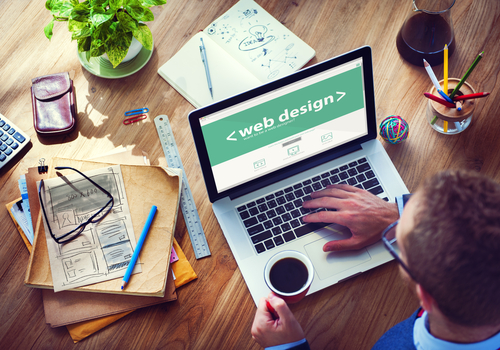
So, you’ve finally decided that now is finally the time to get that business website up and running. You have finally reached the decision and want to make sure you are doing it the right way and the team you have chosen to make that dream come true is rearing to go.
Designing a website, especially if it is a business site, is a complicated process. Careful planning should be the key phrase from the start to the end of the project. Even when it has all been done, a plan should be put in place to handle jobs like support and backups.
With that in mind we will look at what your new design team should be taking into consideration when they are creating your business website:
- The Requirements: everything you will need realized in your web presence will be taken into consideration during the requirement gathering process. It doesn’t matter how trivial it may be, everything you can think of is taken seriously and noted down. It doesn’t matter if it is a comment about the color of a page or what size and type of font the text will be – it is all captured.
What is considered relevant and what is not doesn’t matter at this phase.
- The Logistics: although you may want to have a superb website with all the bells and whistles in place, there will always be limitations that will hold you back. One such limitation will be the hardware you have available to you. Everything from the server your hosting provider allocates to your site and the bandwidth you have available (of course this could depend on how much you can afford to pay for) to the capacity of the national internet grid as a whole should be taken into account. It won’t make sense to have a website that has everything but can’t even load due to the poor internet connection behind it.
This is where the optimal balance between functionality and performance is found.
- The User Capacity Levels: having a website designed using the latest technology and with all the latest methodology will be of no use if there is no one capable enough to use it properly. As a matter of fact, the popular and most visited websites are usually the easiest to navigate and use. Everything is straightforward. There is no confusion about what the next step will be and visitors smoothly move about and use it with ease. Your designers should come up with a design that is the least cumbersome and the most uncomplicated. In case there are complex calculations or processes involved, they should (whenever possible) all be performed in the background without requiring the visitors’ intervention.
- The Sales and Marketing Aspect: a website is only successful if people can find it online and if it is able to deliver goods and products that people are looking for. This means, throughout its lifetime your website will need to be “sold” to potential customers using sales, marketing and SEO campaigns. Your designers will need to take these facts into consideration and make sure that your site is ready or easily adaptable for the implementation of such campaigns.
- Brand Awareness: your brand is the uniqueness that makes you and your services what you are. Your website too should reflect this brand and carry its uniqueness throughout. Your designers should be able to come up with a design that is built around your brand and helps make it stand out even more.
- The Support System: your designers should be the types that not only aim to deliver a quality product, but also the sorts that look toward the future when they won’t be around to hold your hand. While most will look to take over the support of the site themselves with hopes of having a relationship with you over the lifetime of the website, others (usually because they focus more on the designing and creating of websites and not the support) will terminate the relationship as soon as you have signed off on the final product.
A good web designer will look to see if you have a support team that can take over the support of the site once they are out of the picture. In case the talent is lacking, they will have a training (or outsourcing) plan in place for you.
- Security: although this point is mentioned last it is a point that should be considered before, during, and after the creation of your website. In a world where websites are being hacked left and right, you would certainly want to know that your site has been built with the best security features weaved into it and that it has the latest defense software and hardware protecting it.
Your designers should facilitate the easy updating and upgrading of these features and wares so you yourself can take over in their absence.
Once these points have been handled, it is on to creating your site which will surely perform as well as it should.



















